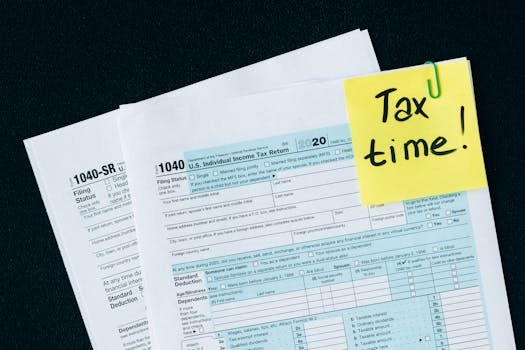A neutral, operations-first guide for EU residents opening or maintaining access to U.S. markets. We’ll cover eligibility, the document stack (ID, proof of address, tax forms), how W-8BEN works in practice, funding from the EU (SEPA/SWIFT, FX tips), what you can and cannot buy under PRIIPs, baseline security, and a compact troubleshooting FAQ.
Eligibility and Restrictions (High-Level)
Before you think about funding or platforms, confirm you’re eligible. U.S. brokers and EU-based brokers that route to U.S. markets apply a layered set of KYC/AML checks, country-of-residency rules, and product-access constraints. In most cases, an EU resident with standard identification and a clean compliance profile can open an account, but details vary by broker and by your personal situation.
Start with residency status: you’ll typically need to register the account under your current EU residential address, not a vacation or business mailbox. If you’re a temporary resident (e.g., student, work visa), some brokers accept you if you can document the address and lawful presence; others may decline or require additional verification. Citizenship is separate from residency—brokers care about where you live for tax and regulatory reasons. If you hold U.S. citizenship or U.S. tax residency (e.g., green card), you’ll be treated as a U.S. person and complete a W-9 instead of W-8BEN.
Second, check restricted countries and sanctions: a few brokers embargo onboarding from specific jurisdictions or nationalities due to regulatory obligations. EU residents living in sanctioned regions will be declined. Dual nationals of sanctioned countries may face extra checks even when resident in the EU; be ready with documentation.
Third, expect appropriateness/suitability questionnaires. EU brokers apply MiFID rules to decide whether they can let you trade complex products (e.g., options, leveraged instruments). Answer truthfully. If your aim is straightforward U.S. stocks/ADRs and UCITS ETFs on EU venues, the hurdle is low; for options or futures, you’ll need to demonstrate experience.
Finally, understand product access: EU retail clients are blocked from buying most U.S.-domiciled ETFs/ETNs that lack an EU Key Information Document (KID) under PRIIPs. That’s not a broker quirk; it’s regulation. You can still buy U.S. stocks and ADRs, and you can buy UCITS ETFs/ETCs on EU exchanges for index/commodity exposure.
Quick eligibility table (orientation, not legal advice):
| Topic | What brokers check | Typical evidence | Notes |
|---|---|---|---|
| Residency | Current EU address & lawful presence | Utility bill/bank statement (≤3 months), residence permit if non-EU | PO boxes generally not accepted |
| Identity | You are who you say you are | Passport/ID, liveness/ selfie, sometimes video call | Names must match funding account |
| Tax status | U.S. vs non-U.S.; treaty eligibility | W-8BEN (non-U.S.), or W-9 (U.S.) | W-8BEN usually e-signed in-platform |
| Source of funds | AML comfort | Employer letter, paystub, bank statements (if requested) | Triggered by thresholds/flags |
| Product access | What you’re allowed to trade | MiFID questionnaire | PRIIPs restrict U.S. ETFs for retail |
Documents Checklist: ID, Proof of Address, Tax Forms
A clean document stack speeds onboarding. Pre-assemble the following and store secure copies for renewals.
Government ID: A valid passport is universally accepted; many brokers also accept national ID cards. Ensure the image is high resolution, no glare, and the MRZ (machine-readable zone) is visible. If your name includes diacritics or multiple surnames, keep the exact spelling consistent across ID, bank account, and the brokerage form.
Proof of Address (PoA): A utility bill, bank/credit card statement, or municipal registry letter dated within the last 90 days is standard. The document must show your full name and service address. Online PDFs from banks/utilities are often fine; screenshots are typically rejected. If you’ve recently moved, update your bank first, then generate a fresh statement.
Tax identification: You’ll be asked for your local tax number (TIN/NIF), and—if trading U.S. securities—an electronic W-8BEN submission inside the broker’s portal. W-8BEN certifies that you’re a non-U.S. beneficial owner and allows treaty withholding rates on U.S.-source income (e.g., dividends). Without a valid W-8BEN, withholding defaults to 30% on eligible U.S. payments.
Employment & source of funds: Expect a short questionnaire (employment status, employer industry, political exposure). For larger deposits or withdrawals, brokers may request source-of-funds proof: recent payslips, a sale contract, or bank statements. Keep a paper trail—it also helps at tax time.
Signatures and liveness: Many brokers use liveness checks (record a short video, read digits) and selfie-with-ID captures. Perform these on a well-lit background with the same device you’ll use later (to avoid device mismatch flags). Don’t crop edges; avoid filters.
Keep a renewal calendar: IDs expire; PoA ages quickly; W-8BEN expires on the last day of the third calendar year after signing (unless facts change earlier). Put reminders in your calendar to refresh each item a month before expiry so trading and withdrawals continue without interruption.
W-8BEN Basics and Treaty Relief (Conceptual)
What W-8BEN is: A U.S. IRS form where you certify you are not a U.S. person, declare your residency country, and claim tax treaty benefits (if any). Brokers collect W-8BEN electronically and keep it on file; they rely on it to apply the correct withholding tax on U.S.-source income (e.g., dividends from U.S. stocks/ADRs).
What W-8BEN is not: It’s not a waiver of your home-country taxes, not a guarantee of zero withholding, and not a substitute for your local tax return. You remain responsible for declaring income and capital gains according to your national rules.
Withholding outcomes: Most EU countries have treaties that reduce dividend withholding below 30% (often 15% for individuals). Interest withholding and other categories vary. The broker uses your W-8BEN country to apply the correct rate at source and will show the withholding on your dividend advice and year-end tax forms (e.g., 1042-S). Some ADRs also pass through depositary fees, seen as small deductions.
Validity and renewal: W-8BEN remains valid until Dec 31 of the third year after the year you signed it (sign in 2025 → valid through Dec 31, 2028), unless your circumstances change (e.g., you move countries, become a U.S. person, change name). If anything material changes, update the form immediately in your broker portal.
Multiple accounts: Each broker holds its own W-8BEN for you. If you maintain two platforms, you’ll complete two W-8BENs. Corporate, trust, or joint accounts use different forms (e.g., W-8BEN-E for entities).
Common mistakes to avoid:
- Declaring the wrong residency country (ensure it matches PoA).
- Letting W-8BEN expire—withholding bounces back to 30%.
- Confusing W-8BEN with W-9 (W-9 is for U.S. persons).
- Assuming W-8BEN eliminates your local tax obligations—it doesn’t.
Funding from the EU: SEPA, Wires, Fintechs, FX Tips
Your funding workflow should minimize fees, FX spread, and reconciliation headaches. Decide early whether you’ll trade U.S. markets (USD) or focus on EU venues (EUR) for UCITS products—and whether you prefer to hold multi-currency balances.
SEPA first: For EU-based brokers (or EU branches of global brokers), SEPA transfers are typically free or very low cost, settle same-day or next day, and are easy to reconcile. Always send from a bank account in your name—third-party payments are usually rejected.
SWIFT when needed: Funding a U.S. account from the EU may require SWIFT. Check your bank’s international wire fees, intermediary bank charges, and ensure the beneficiary name exactly matches your brokerage account name. Keep MT103 confirmations for your records.
Fintech/multi-currency rails: Some investors use regulated multi-currency accounts to obtain better FX rates and then transfer domestically in the target currency (EUR→USD). If you use a fintech, verify the supported rails (SEPA/ACH/SWIFT), name matching, and whether the broker accepts transfers from such providers.
FX strategy: FX can dwarf commissions. If you frequently buy U.S. securities, consider converting a larger block to USD when spreads are narrower and then re-using that USD over time, rather than paying per-trade auto-FX. Compare the broker’s FX spread (often 20–100 bps) and any fixed conversion fee. If you mostly buy EUR-denominated UCITS (e.g., gold ETCs on Xetra), you can stay in EUR—just remember the underlying may be USD-priced (performance risk remains even if trading currency is EUR).
Inbound/outbound hygiene: Keep descriptive references on transfers (your account number) and retain PDF statements. For larger flows, expect occasional source-of-funds checks; having a neat folder of payslips, contracts, or sales documents saves time.
Settlement and availability: Stocks and ETFs typically settle T+2. Some brokers let you re-use proceeds immediately; others wait for settlement to release withdrawable cash. Plan rebalancing dates accordingly.
Product Access Notes: U.S. Stocks & Options; ETFs with PRIIPs Limits
It’s critical to know what you can buy as an EU retail client:
U.S. stocks, ADRs, and many options: These are generally available once your broker enables U.S. market access. Options approval requires an appropriateness check; beginners may be limited to covered calls or protective puts. Always read your broker’s options risk disclosure.
U.S.-domiciled ETFs/ETNs (PRIIPs): Most are not buyable by EU retail because the issuer does not publish an EU KID. Brokers therefore block purchases. You may still sell existing positions (if you acquired them before the block or transferred them in), but new buys are typically disabled. If you are categorized as a professional client under MiFID (stringent criteria), access may reopen—but this changes your protections and minimums.
Clean alternatives: For index/commodity exposure, use UCITS ETFs/ETCs listed on EU exchanges (Xetra, Euronext, etc.). They’re designed to comply with PRIIPs, provide KIDs, and often have competitive TERs and liquidity. For gold specifically, see the EU-centric comparison: Gold ETFs vs Physical (EU) → /gold-allocation-playbook-eu (NRMint) and primer on gold ETFs (Spanish): https://24x.es/comprar-acciones-usa is a separate topic—see below for interlinks on buying U.S. stocks from Spain.
Derivatives and leveraged products: Access varies by broker and your MiFID assessment. Many retail investors are not approved for futures or high-leverage instruments. Use caution; leverage plus cross-currency exposure magnifies risk.
Transfers: If you transfer assets in-kind from another broker, check whether the new broker will allow holding and selling of U.S. ETFs acquired elsewhere. In many cases, they allow custody and sell-only but still block buy orders.
Security: 2FA, Device Hygiene, Travel Access
Operational security is part of your investment edge. Cross-border access increases the attack surface; reduce it with a few non-negotiables.
Strong authentication: Enable 2FA everywhere—ideally a hardware security key (or at least an authenticator app). Add withdrawal whitelists so funds can only go to accounts in your name. Use a unique admin email for your broker, not the same address you use for newsletters.
Device hygiene: Keep your OS/browser patched. Use a dedicated browser profile with no extra extensions for trading. Avoid public Wi-Fi; if unavoidable, use a trustworthy VPN. Never paste credentials into forms that arrived via email links—log in by typing the broker’s URL or via your password manager.
Travel-proofing: Add a backup 2FA method (secondary key or recovery codes) and store it securely off-device. If you rely on SMS 2FA, ensure roaming works and your number is stable. Some brokers block logins from certain countries; know your broker’s geo-policy before traveling.
Data discipline: Store W-8BEN copies, statements, and tax forms (e.g., 1042-S) in an encrypted archive with redundant backups. Create a one-page Investment Policy Statement (IPS) listing your target allocation, rebalancing rules, cost thresholds, and the products you’re allowed to use (e.g., “UCITS ETFs only for index/commodity exposure”).
Social engineering: Be wary of “urgent compliance” emails. Confirm any account changes through your broker’s secure message center. Customer support will not ask for your 2FA codes.
FAQs and Troubleshooting
Can an EU resident open a U.S. brokerage account?
Often yes, but it depends on the broker’s onboarding policy for your country of residence. You’ll submit ID, PoA, and W-8BEN as a non-U.S. person. Some U.S. brokers prefer certain EU countries; others onboard EU clients through their EU subsidiaries.
Why can’t I buy a U.S. ETF my friend in the States buys?
Because of PRIIPs. Without an EU KID, brokers must block sales to EU retail. Use a UCITS equivalent on an EU exchange or, if you truly qualify and accept the trade-offs, seek professional client status.
My W-8BEN shows 30% withholding anyway—why?
Possible causes: the form expired, residency mismatch, the security doesn’t qualify for treaty relief, or it’s an ADR fee you’re seeing. Check the expiration date, ensure your residency matches PoA, and contact support with the payment advice attached.
The broker rejected my Proof of Address. What now?
Regenerate a PDF statement with your full name and address clearly printed, dated within 90 days. Mobile screenshots and shipping receipts are often rejected. A municipal registry letter or bank statement usually works.
Can I fund from a fintech account?
Many brokers accept transfers from regulated multi-currency accounts if the name matches. Some restrict or flag them. When in doubt, send from a traditional bank account in your name, or ask support to whitelist your fintech IBAN.
I moved to another EU country. Do I need a new account?
Update your address and tax residency inside the existing account. You’ll likely need a fresh PoA and a new W-8BEN reflecting the new country. Product access shouldn’t change unless your new country is restricted by that broker.
How do I buy U.S. stocks from Spain specifically?
See the step-by-step guide (Spanish): “Cómo comprar acciones USA desde España” → https://24x.es/comprar-acciones-usa (24x.es). It covers account types, tax points, and practical tips.
Where can I learn broader cross-border setup?
Review our companion piece: Invest in US Markets from the EU → /invest-in-us-from-eu (US21) for the big-picture workflow and checklists.
Disclaimer
Opening and running a U.S.-market brokerage as an EU resident is straightforward once you align three constraints:
- Regulatory reality: PRIIPs blocks most U.S. ETFs for EU retail; use UCITS analogs on EU exchanges for index/commodity exposure.
- Tax plumbing: Keep W-8BEN current so treaty withholding applies; remember it doesn’t replace your local tax return.
- Operational hygiene: Tighten funding, FX, and security so frictions and risks stay minimal.
Combine those with a written IPS and you’ll have a durable, low-friction setup for cross-border investing.
Compliance disclaimer: This article is informational and not investment, tax, or legal advice. Regulations, broker policies, and tax rules change and vary by country and personal circumstances. Consult qualified professionals and your broker’s official documentation before acting.
Related interlinks:
- Gold Allocation Playbook — sizing 2–10%, instruments, rebalancing.
- Cómo comprar acciones USA desde España — Requirements and needed documentation.
- Invest in US Markets from the EU — US-listed ETFs, UCITS equivalents, miners, ADRs.



